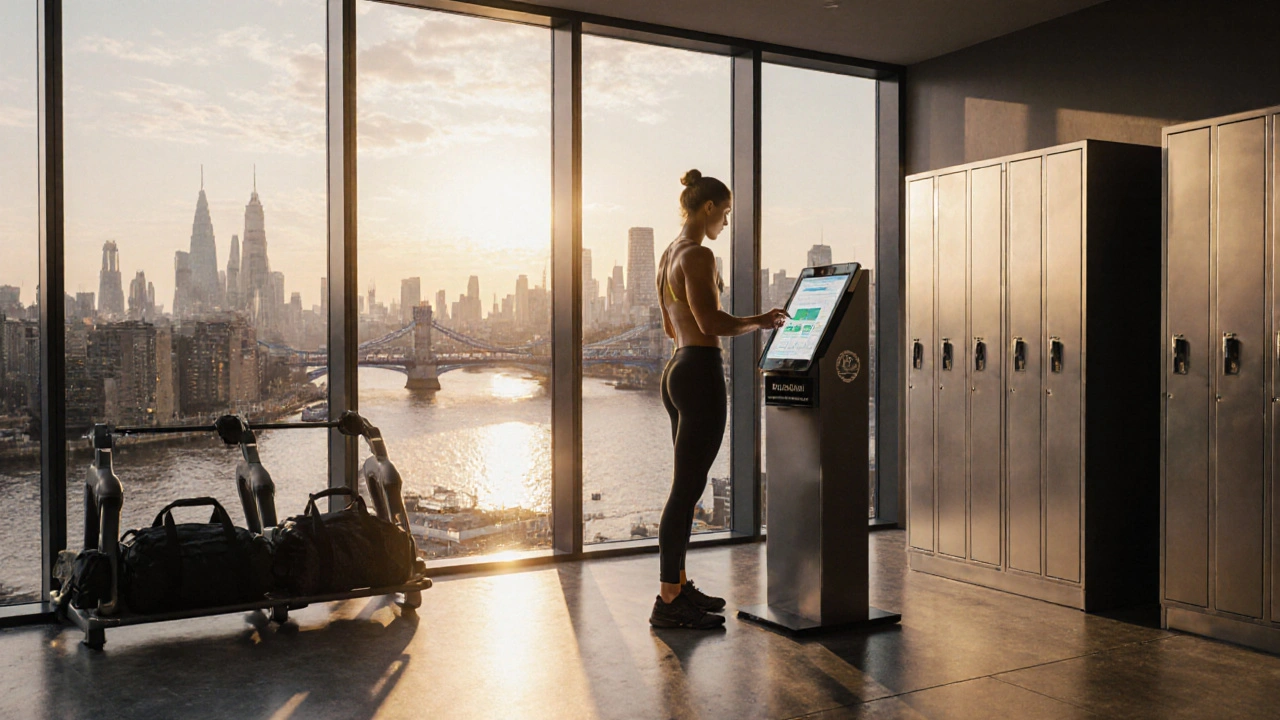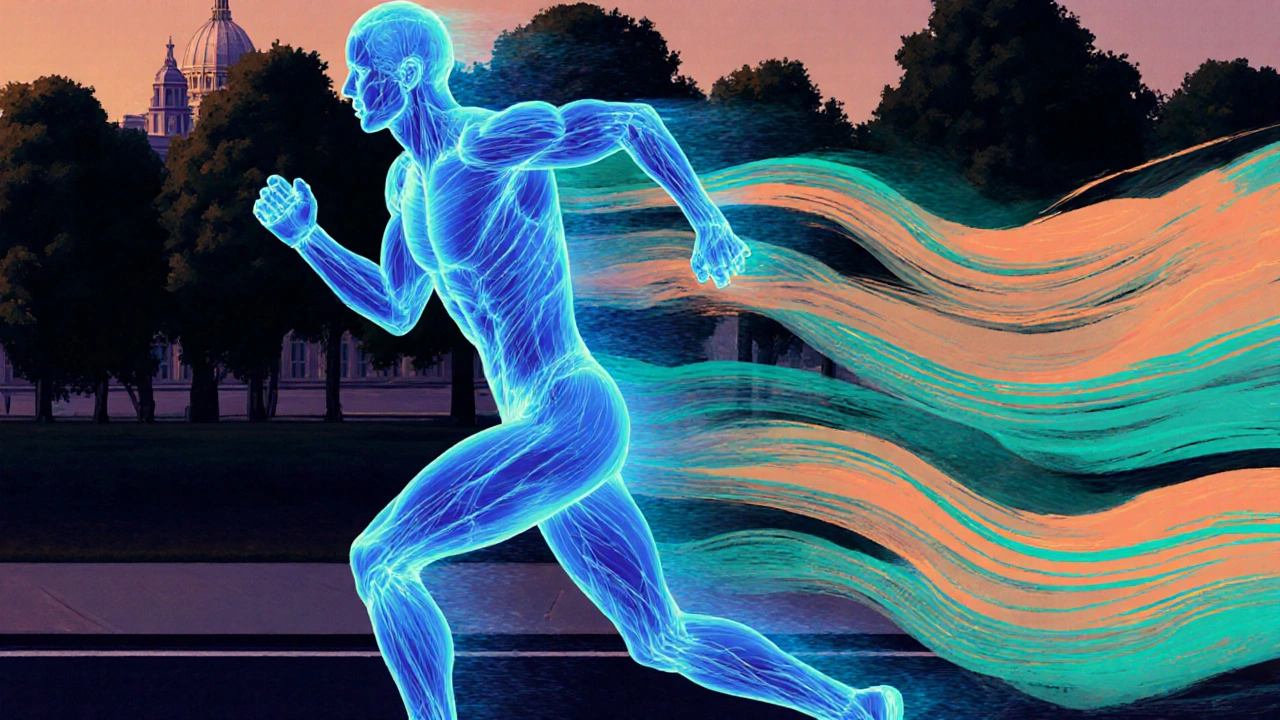Explore the most effective body massage types-from Swedish to deep tissue, Thai, hot stone, and sports massage. Learn how each works, who it’s for, and how to choose the right one for your needs.

- Created by: Liam Redgate
- Completed on: 14 Oct 2025
- Categories: Sports Massage
Key Takeaways
- Sports massage speeds up muscle recovery and reduces injury risk for London gym‑goers.
- Typical session costs £45‑£85 and lasts 30‑60 minutes.
- Look for qualified massage therapists registered with the UK Register of Massage Therapists.
- London offers specialised services in Shoreditch, Canary Wharf, and near major sports venues.
- Combine massage with proper hydration, sleep, and mobility work for best results.
Quick Answer
Sports massage is a targeted, hands‑on therapy that helps athletes and fitness enthusiasts in London recover faster, improve performance, and stay injury‑free. A typical session lasts 30‑60 minutes, costs between £45 and £85, and can be booked at gyms, dedicated clinics, or mobile practitioners.
What Is Sports Massage?
When you hear Sports Massage is a therapeutic technique that focuses on muscles, tendons, and joints to enhance athletic performance and speed up recovery, think of it as a blend of deep tissue work and dynamic stretching applied by a trained practitioner. It’s not just a luxury; it’s a preventive tool used by runners, cyclists, weightlifters, and even office workers who hit the squat rack after a desk‑job.
Why It Matters for London’s Fitness Community
London’s fitness scene is a mosaic of boutique studios, historic gyms, and outdoor bootcamps in places like HydePark and Hampstead Heath. The city’s commuters also juggle long train rides, which can stiffen muscles and increase injury risk. Sports massage offers a quick, on‑the‑go solution that fits into a busy London schedule, letting people bounce back after a HIIT class or a weekend marathon.
Benefits of Sports Massage
- Accelerated recovery: Increases blood flow, flushing out lactic acid and metabolic waste.
- Injury prevention: Identifies tight spots before they turn into strains or tears.
- Enhanced performance: Improves range of motion, allowing deeper squats and longer runs.
- Stress reduction: Triggers the parasympathetic nervous system, lowering cortisol levels.
- Mobility boost: Combines soft‑tissue work with functional stretching.

Types of Sports Massage Available in London
London’s therapists tailor their approaches to the client’s sport and training load. Common variations include:
- Pre‑event massage: Light, quick strokes to prime muscles before a race or competition.
- Post‑event massage: Deeper pressure to reduce soreness after a hard workout.
- Maintenance massage: Regular 30‑minute sessions for athletes training 3‑5 times per week.
- Myofascial release: Focuses on fascia, the connective tissue that can bind muscle groups together.
- Trigger‑point therapy: Zeroes in on knots that refer pain to other areas.
How to Find Sports Massage Services in London
Finding a reputable practitioner is easier than you think. Here’s a step‑by‑step guide:
- Search for "sports massage London" on Google and check the GoogleMyBusiness listings for ratings above 4.5.
- Visit the UK Register of Massage Therapists (UKRMT) website to verify credentials.
- Ask local gyms or personal trainers for referrals - many have preferred therapists.
- Check if the therapist offers mobile services; many operate out of a van that can come to your home or office.
- Read reviews on platforms like Trustpilot or Yelp to gauge consistency.
Neighbourhood hotspots include:
- Shoreditch - a cluster of boutique clinics catering to young professionals.
- CanaryWharf - high‑end wellness centers near corporate offices.
- Southbank - therapists near the sports complex and rowing clubs.
What to Expect During a Session
A typical London sports‑massage appointment runs like this:
- Brief intake: The therapist asks about recent workouts, injuries, and goals.
- Warm‑up: Light effleurage strokes to increase circulation.
- Targeted work: Deep pressure on sore muscles, followed by stretching.
- Feedback loop: You’re encouraged to communicate pressure levels.
- Cool‑down: Gentle strokes to calm the nervous system.
Sessions end with advice on hydration, foam‑rolling, and whether a follow‑up is needed.
Pricing and Booking
London pricing reflects the city’s cost of living and the therapist’s expertise. Expect the following ranges:
- 30‑minute session: £45‑£60
- 45‑minute session: £60‑£75
- 60‑minute session: £75‑£85
Many clinics offer package discounts (e.g., 5 sessions for £350) and corporate wellness programs. Booking is usually done via online calendars, phone, or even WhatsApp for mobile therapists.

Safety Tips
- Ensure the therapist is certified by UKRMT or a similar body.
- Disclose any medical conditions (e.g., recent surgeries, blood clotting disorders).
- Stay hydrated before and after the session to aid toxin flush.
- Start with moderate pressure; a good therapist will adjust based on your comfort.
- If you feel sharp pain, stop immediately - it could indicate an underlying issue.
Sports Massage vs. Deep Tissue Massage in London
| Aspect | Sports Massage | Deep Tissue Massage |
|---|---|---|
| Primary Goal | Performance enhancement & recovery | Chronic pain relief |
| Typical Pressure | Medium to firm, adjusted per workout | Firm to very firm |
| Session Length | 30‑60minutes | 60‑90minutes |
| Best For | Athletes, gym enthusiasts | Individuals with chronic muscle tension |
| Common Locations in London | Shoreditch studios, mobile services, sports clubs | Wellness spas, private practice clinics |
Frequently Asked Questions
FAQ
Do I need a referral to book a sports massage in London?
No referral is required. Just choose a qualified therapist and schedule a session. Some GPs may recommend it for injury rehab, but it’s not mandatory.
How often should I get a sports massage?
For active athletes, once a week or after every 3‑4 hard training sessions works well. Casual gym‑goers might benefit from a monthly session.
Is sports massage covered by NHS or private health insurance?
The NHS usually does not cover it unless prescribed for a specific medical condition. Some private insurers offer limited reimbursement if the therapist is registered.
Can I get a sports massage at my workplace?
Yes - many mobile therapists service corporate offices in London, especially in the City and CanaryWharf districts.
What should I wear for a sports massage?
Wear comfortable, breathable clothing that allows easy access to the muscle groups being treated - shorts and a t‑shirt are common.
Next Steps
If you’re serious about stepping up your performance, start by searching for a qualified therapist in your area and booking a 30‑minute maintenance session. Track how you feel after each visit - less soreness, better range of motion, and quicker recovery are good signs you’re on the right track.
Explore how sports massage helps London fitness enthusiasts recover faster, prevent injuries, and boost performance with tips, pricing, and therapist finding guide.
Discover how deep tissue massage helps fight muscle knots. Learn the benefits, what to expect in London, pricing, booking tips, and safety guidelines for a better, pain-free you.



Rayna Hawley
October 15, 2025 AT 05:46I've seen how a quick 30‑minute sports massage can cut down my post‑run soreness by half, especially when I juggle a 9‑to‑5 desk job and weekend trail runs. The article nails the price range – £45‑£85 is exactly what I pay at a Shoreditch clinic I frequent. Make sure the therapist is UKRMT‑registered; otherwise you risk ending up with a “massage” that feels more like a bruising session. Also, keep a water bottle handy before and after; staying hydrated really amplifies the recovery benefits. Lastly, don't forget to stretch a bit after the session – it ties everything together nicely.
Rajesh Kumar bisai
October 15, 2025 AT 19:40Hey folks, absolutely love that sports massage is becoming a staple in London gyms – it’s a game‑changer for anyone training hard. If you’re new to it, start with a 45‑minute maintenance session and notice how your mobility improves week by week. Pair it with regular foam‑rolling and you’ll see less stiffness and more energy in your workouts. Keep at it and you’ll feel the difference in both performance and mood!
Ariel Lauren
October 16, 2025 AT 09:33Professional athletes commonly integrate sports massage into their weekly recovery protocols.
Vishal saini
October 17, 2025 AT 13:20Sports massage, when applied correctly, serves as a targeted intervention that accelerates metabolic waste removal and promotes optimal muscle function. The physiological basis lies in increased microcirculation, which delivers oxygen and nutrients while flushing lactate and inflammatory mediators from the interstitial spaces. For London’s fitness community, this translates to reduced downtime between intensive training blocks, allowing athletes to maintain training frequency without compromising quality. Selecting a therapist registered with the UK Register of Massage Therapists ensures adherence to standardized protocols and ethical practice, reducing the likelihood of inadvertent injury. During the intake phase, a competent practitioner will document recent training loads, existing musculoskeletal complaints, and any contraindications such as anticoagulant therapy. This information guides the therapist in modulating pressure, selecting appropriate techniques-such as myofascial release for chronic tension or trigger‑point therapy for localized knots-and determining session duration. A typical 30‑minute maintenance session concentrates on high‑risk muscle groups, employing rhythmic effleurage to warm tissues followed by deeper strokes on the quadriceps, hamstrings, and calves. The subsequent stretching phase enhances sarcomere length, thereby improving joint range of motion and reducing the risk of strain during subsequent lifts or runs. Post‑session recommendations often include sustained hydration, as water facilitates the transport of metabolic by‑products liberated during the massage. Incorporating active recovery modalities, such as low‑intensity cycling or gentle yoga, synergises with the massage effects, further supporting tissue adaptation. Moreover, consistent application-approximately once per week for competitive athletes or once per month for recreational gym‑goers-creates a cumulative conditioning effect on the fascial network, rendering it more resilient to shear forces. In practice, many London clinics bundle sports massage with ancillary services like physiotherapy assessments, offering a comprehensive approach to performance optimisation. Mobile therapists add convenience for corporate employees, delivering the same therapeutic benefits in office environments, which is particularly valuable given the sedentary nature of many desk‑based professions. Cost considerations remain relevant; while a single session may range from £45 to £85, package deals often provide significant savings and encourage adherence. Finally, regular monitoring of subjective markers-such as perceived soreness, sleep quality, and mood-helps quantify the tangible benefits of the intervention and informs future scheduling decisions. By integrating these evidence‑based practices, London’s fitness enthusiasts can harness sports massage as a reliable tool for enhanced recovery, injury mitigation, and performance gains.
Steve Wilson
October 18, 2025 AT 17:06Great breakdown, Vishal! I’ve started booking weekly maintenance sessions after my HIIT classes and already notice smoother transitions between workouts. Keeps the motivation up when you feel less sore.
William Sogus
October 19, 2025 AT 20:53Sure, you guys love the nice “package deals”, but have you ever wondered why big wellness chains push these pricey massages? It's a cash‑grab scheme tied to insurance rebates and hidden data collection – they track your health metrics to sell to third‑party advertisers. Stay woke and choose indie therapists who aren't feeding the corporate machine.